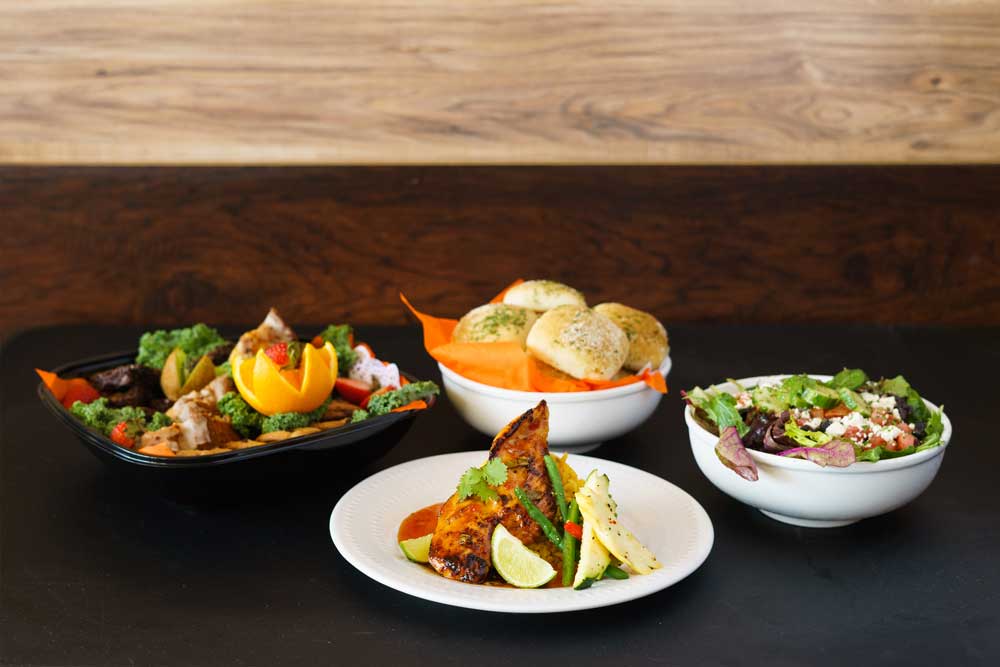This article is part of a series called “Getting Off-Premises”, which examines how to build an off-premises business.
Operators spend big bucks drawing diners to their restaurants, and you may be one of them. But guess what? Those prized customers increasingly want food delivered to them with the swipe of an app. This shift in how people eat has substantially altered the restaurant industry, fueling a market called “off-premises catering.” (Read more about the off-premises catering market.) According to Technomic, the national catering market generated $58.1 billion in 2017. While that figure is only a slice of the $799 billion restaurant market, the upside potential for catering is massive.
David Portalatin, a food industry advisor for the NPD Group, believes that figure is just the start of a booming trend for the food service industry. “Restaurants that adjust to that shift have an incredible opportunity in front of them,” he says.
To get your share of the fat profits, you’ll need to develop a strong action plan. I’ll walk you through the five steps of customizing a catering program for your operation.
Step 1. Establish Realistic Sales Goals for Catering
Goal setting is an art. Some operators set unrealistically high goals that lead to frustration. Others set goals so low their catering business won’t reach its potential.
So, base your goals on the performance of your catering program, not random numbers (read more). Starting out by saying “I’m going to double my catering sales” means little if you have no sales or just a few weekly transactions. But if you set a tangible goal of $1,500 in catering sales per week, that’s a firm number on which you can base food and labor costs. The target is also modest enough that your employees can attain your sales goals.
Step 2. Develop an Operational Plan for Catering
Now figure out how to get things done and make the business thrive. Develop an operations plan to cover the costs associated with starting and running a catering business. Start by asking:
- How will I market catering? (E.g., point-of-sale displays, social media, paid ad campaigns.)
- How much catering-specific equipment will I need to accommodate my sales goals? (Heated food-delivery bags, coolers, a delivery vehicle.)
- Can my staff manage higher volumes of business that result from catering, or will I need to hire more employees?
Take the time to consider every aspect of operations before offering your catering service. Marketing something you can’t deliver could harm your reputation in short order.
Step 3. Craft a Catering Menu from Your Restaurant Menu

Ideally your catering menu will include customer favorites. But not every item on your restaurant menu will work well in catering, so ask the following:
- Does this item travel well off-premises or is the food quality degraded upon delivery?
- Does this item “package” well? Cold sandwiches and salads can be packaged easily, but hot pasta cools quickly in a clamshell and turns gummy in sealed plastic.
- Can this item be consumed easily in a group setting? Handheld items or one-bowl meals are ideal.
Some menus work well with delivery and catering, but many don’t, according to Carl Sacks, senior consultant and managing director with Certified Catering Consultants. The quality of hot sandwiches and fried foods declines once those items leave the window, he says, “so you must choose products that travel well.”
Step 4. Keep Your Menu Small, So You Can Execute
Catering customers often ask for items not on your menu. Try not to accommodate special requests that:
- Add new SKUs to your inventory, consume storage space, or lengthen your inventory turnover time.
- Could complicate production and labor efficiency both on or off restaurant premises.
Furthermore, try to keep your catering dishes simple, so your team can execute dishes quickly. This way, you’ll be able to avoid overtime costs from added labor.
Carl Sacks warns that “overtime can be highly problematic” for restaurants because of rising wages. His advice? Operators should review staff schedules for periods of downtime when staff can help with catering.
Step 5. Pick and Train a Great Team
Put your catering program on firm footing with a strong team of your best restaurant employees (read more).
- Single-Unit Operators should choose dedicated employees who’ll take ownership of the catering program, oversee and produce orders, and ensure proper delivery. For these employees, create incentives tied to growth or profit such as bonuses or promotions.
- Multi-Unit Operators should also choose current staffers to manage the catering program. But look outside the company to hire a salesperson who can build catering programs at all your locations. This role would focus exclusively on growing sales and profits. Offer this person a base salary and an incentive package or bonus structure tied to sales and revenue goals.
Step 6. Be a Data-Driven Catering Business
Data tells the story of your business’s health and growth. And an appreciation for numbers is a defining trait of a great operator. Chart the progress of your catering business by monitoring the following:
- Sales: There are different ways to look at your business.
- Month-to-month comparisons snap a picture in granular detail. Use this information to target problem areas.
- Quarter-to-quarter comparisons reveal larger trends.
- Year-over-year comparisons allow a bird’s-eye view of your business.
- Performance of menu items: If an item doesn’t sell well, ditch or replace it.
- Food cost: Food prices change drastically, so prune back seasonal items to control costs.
- Labor: Track the hours of your catering employees to avoid overtime costs.
Your data will either affirm you’re on target or direct you to correct your course. Don’t just look at the data; take action.
There you have it: A good foundation for your action plan. Think creatively, set goals, make plans, follow them methodically, make necessary adjustments, and watch your catering sales grow.
Are you meeting the needs of your catering customers?








